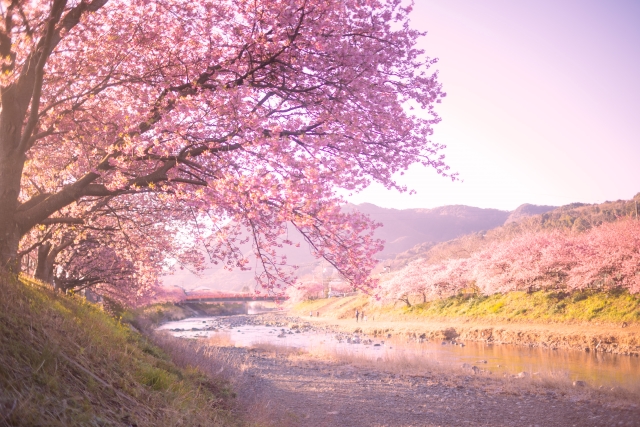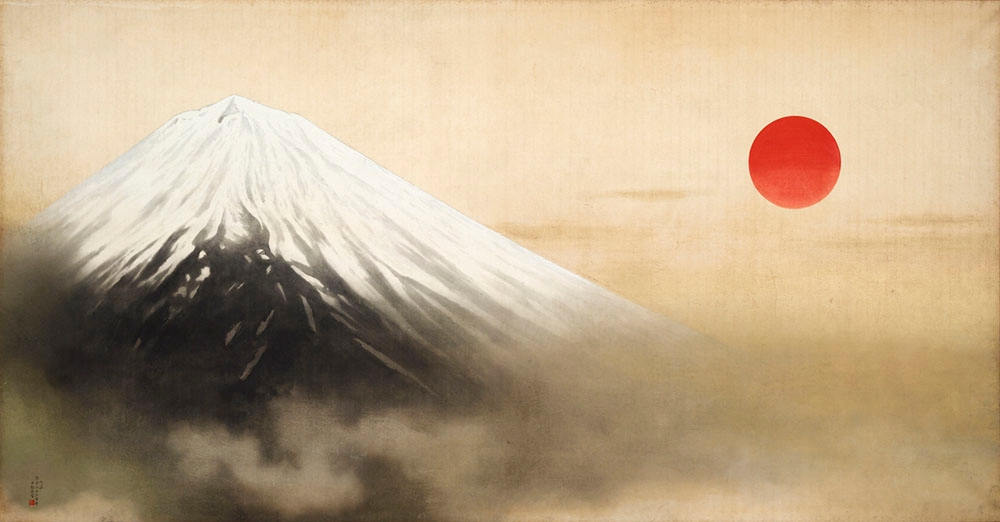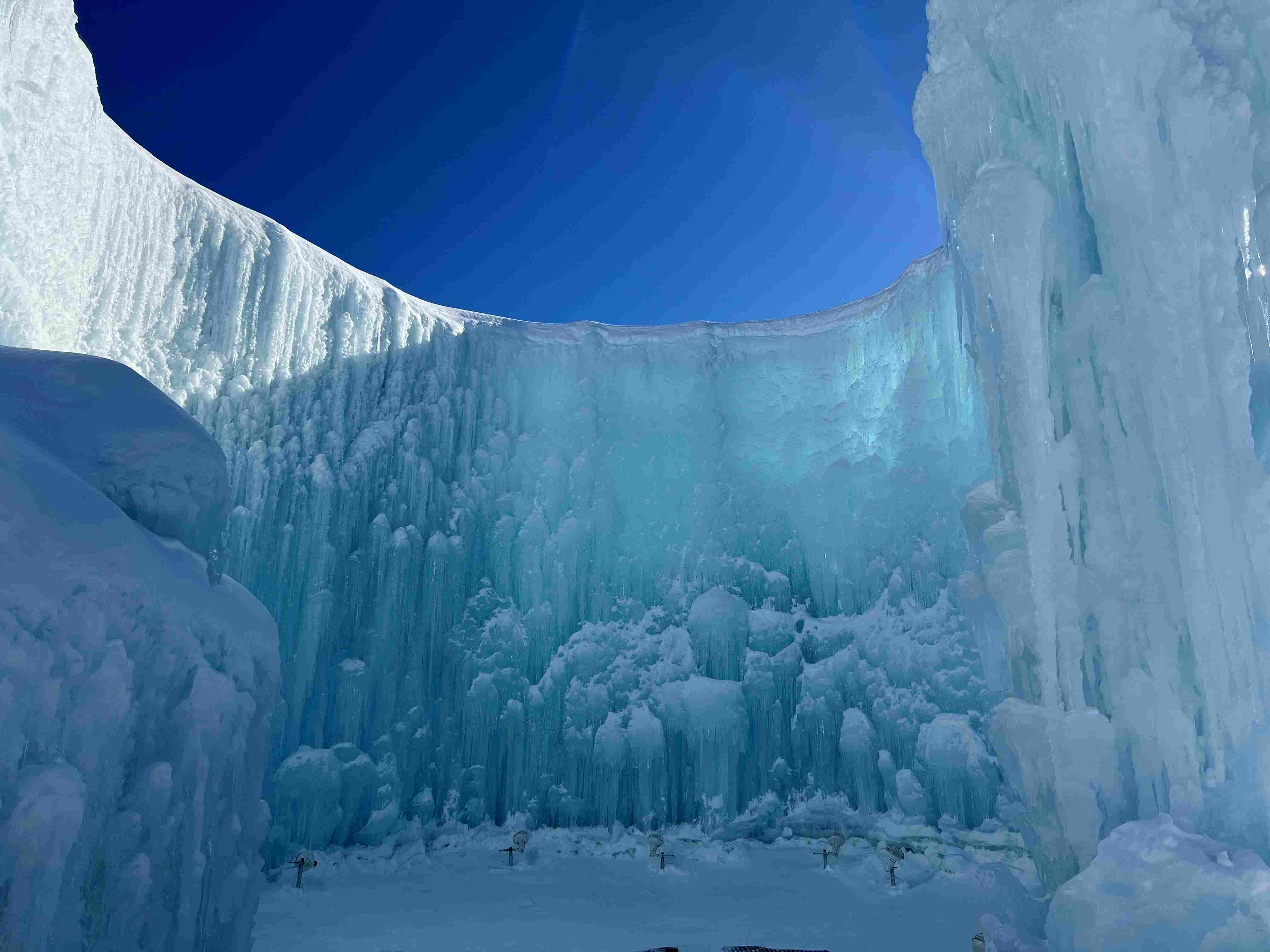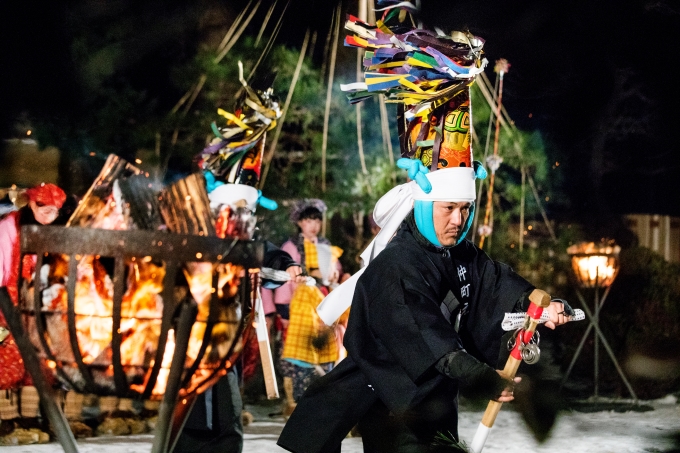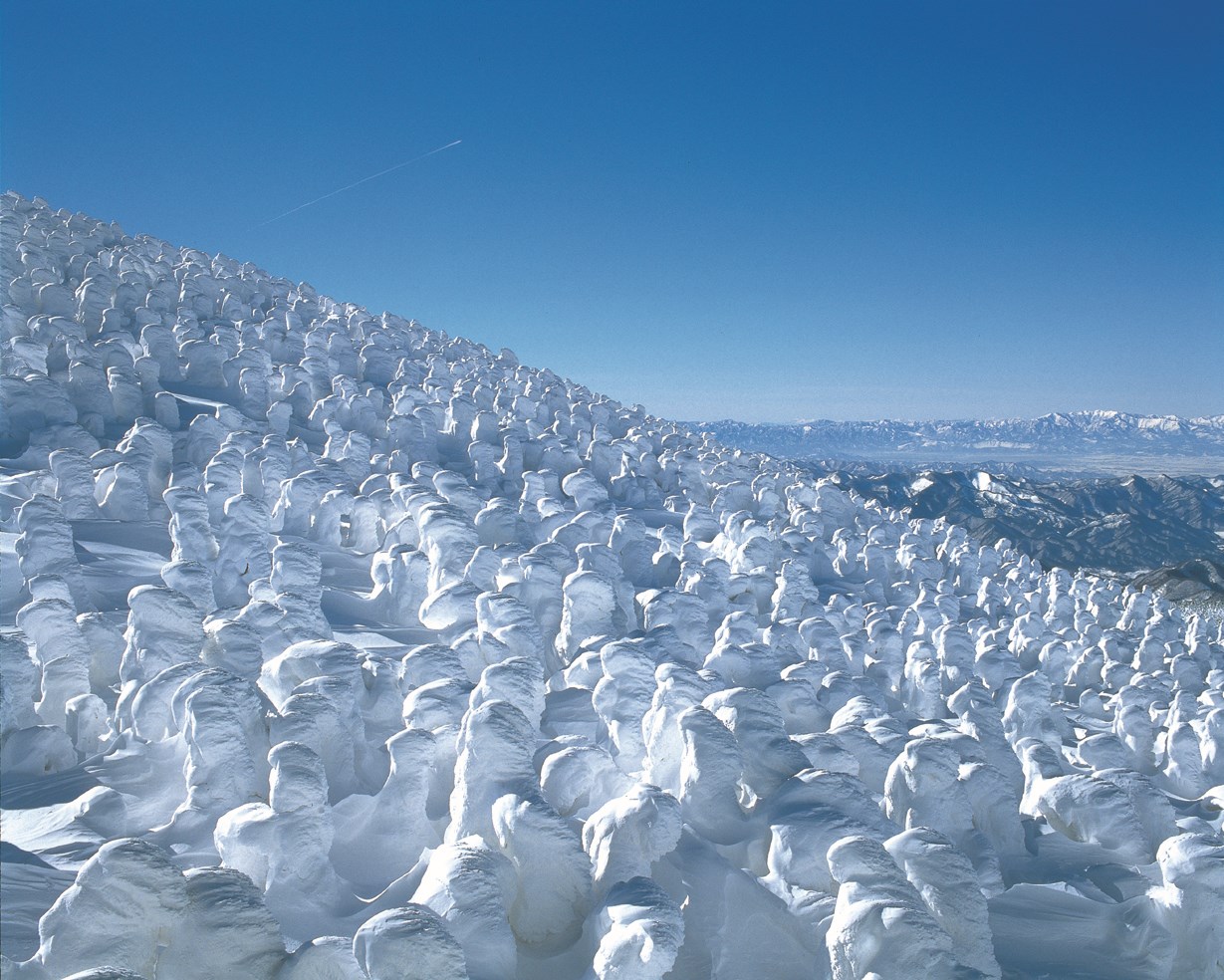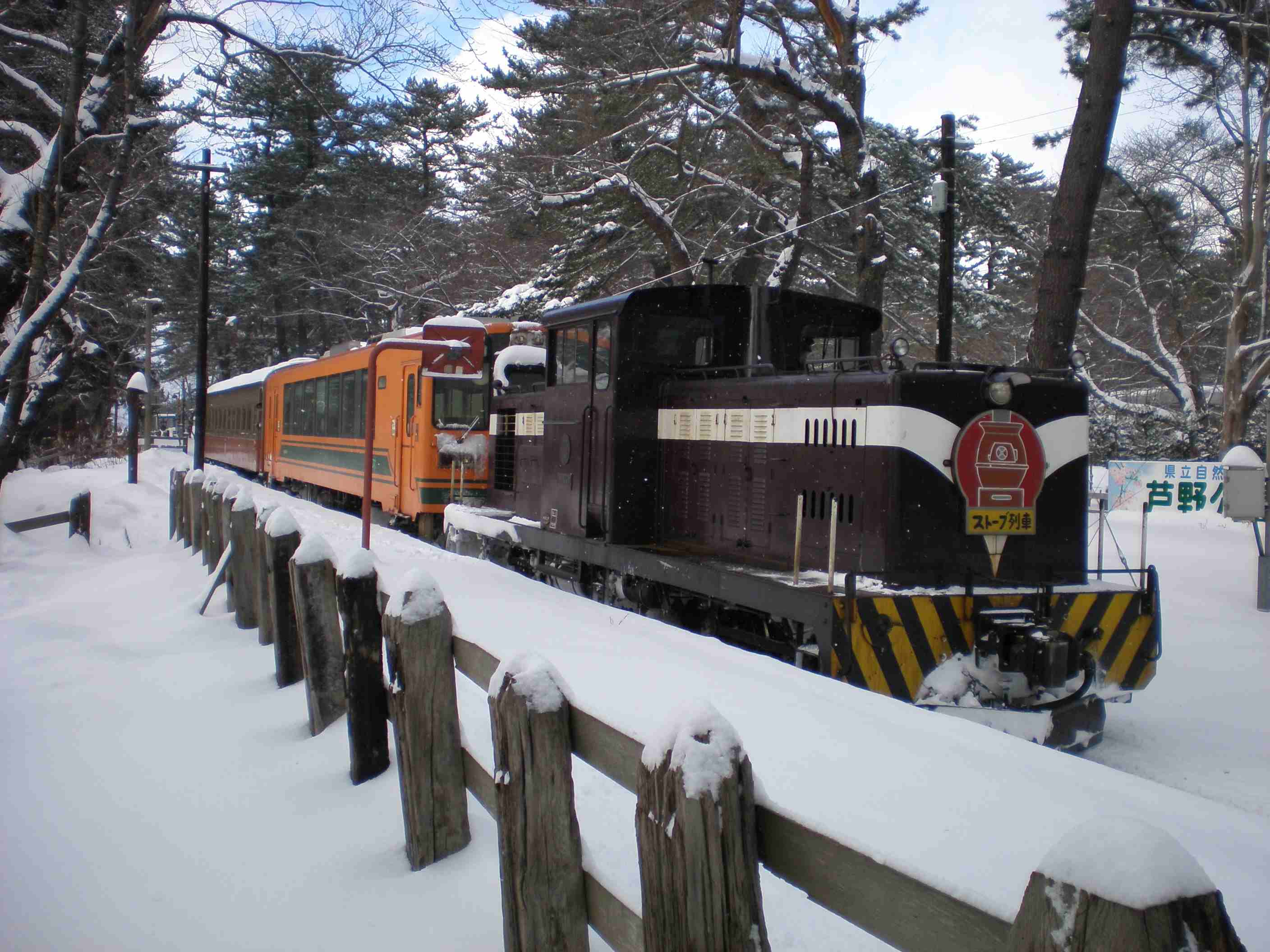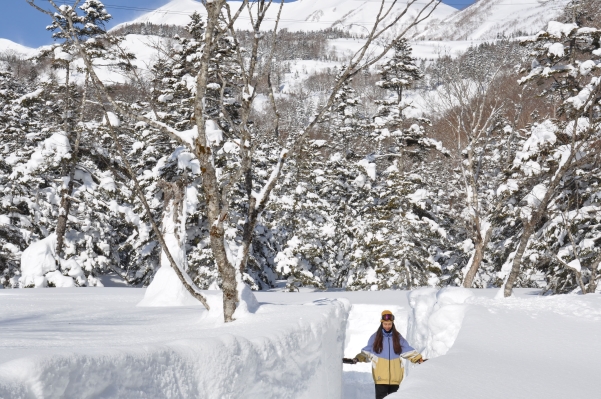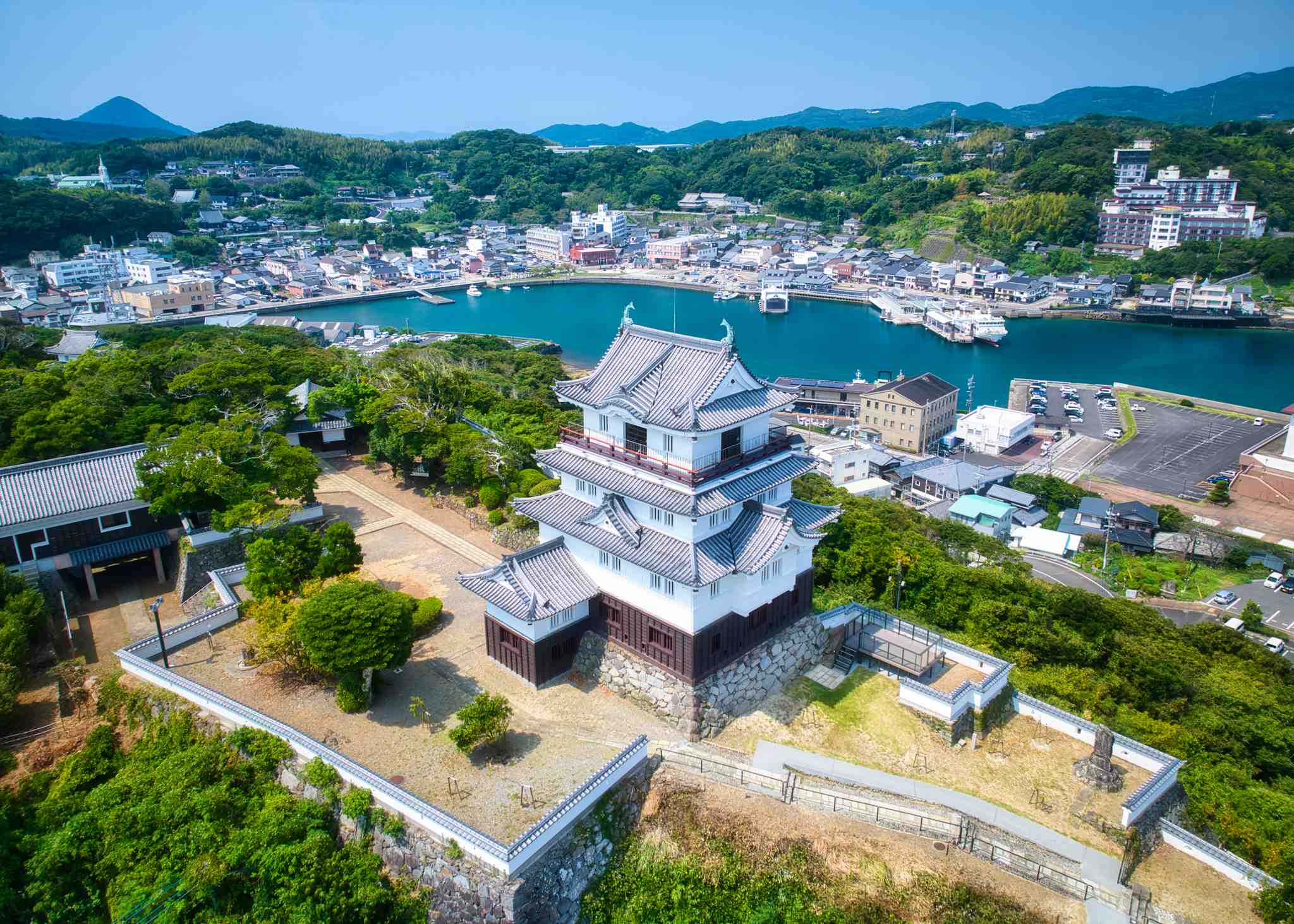Japan Tourism Topics by JNTO -2025 January Vol.1
1. A Tranquil Stay Within a Historical Section of the Lively City of Osaka, Opening Spring 2025
At Patina Osaka, Japanese tradition beautifully melds with modern luxury. Though set among the bustling metropolis, the hotel is situated right between landmarks that stand as testaments to Osaka’s long-standing history, such as Osaka Castle and the Remains of Naniwa-no-Miya Palace, and it boasts an incredible view free from obstructions on three sides. It incorporates natural motifs and Japanese aesthetics to invoke a sense of calm, holding 221 fabulous guest rooms that both relax and entertain. Five dining establishments create soothing spaces that overlook the Osaka cityscape, with several offering menus that include organically grown produce. A unique establishment at the hotel is the Listening Room, lined with vinyl records that can be enjoyed day or night. You can care for your mind and body at the hotel’s fitness center and pool, and mindfulness experiences await at Patina Wellness which houses hydrotherapy rooms, cryotherapy suites, and an infrared sauna.
Patina Osaka
Patina Osaka
2. Beckon Good Luck at an Exhibit for Auspicious Symbols, Until March 2, Tokyo
The Museum of the Imperial Collections, Sannomaru Shozokan is located on the grounds of the Imperial Palace, only a 5-minute walk from Otemachi Station, and it houses a large collection of artworks, including paintings, calligraphy, and crafts handed down in the Imperial Household. In celebration of the new year, the Museum is holding an exhibit titled “Inviting Fortune: Auspicious Symbols in Japanese Art.” As the name indicates, this exhibit explores the long history of auspicious symbols, which have taken various shapes and forms since ancient times. The exhibit displays a carefully curated selection of scrolls, figurines, and more, some of which date back to the Edo period (1615 – 1868). Subjects include the legendary Mt. Penglai with connections to immortality and other animals such as cranes that are associated with long lives, as well as mythical creatures including the phoenix, “qilin,” and Chinese lion. After observing the beautiful symbols of good fortune, you can explore the distinguished precincts and view other historically significant structures such as the ruins of Edo Castle when the Imperial Palace’s East Gardens are open.
(*All works in the exhibit are housed in The Museum of the Imperial Collections, Sannomaru Shozokan.)
Inviting Fortune: Auspicious Symbols in Japanese Art
The Museum of the Imperial Collections, Sannomaru Shozokan is located on the grounds of the Imperial Palace, only a 5-minute walk from Otemachi Station, and it houses a large collection of artworks, including paintings, calligraphy, and crafts handed down in the Imperial Household. In celebration of the new year, the Museum is holding an exhibit titled “Inviting Fortune: Auspicious Symbols in Japanese Art.” As the name indicates, this exhibit explores the long history of auspicious symbols, which have taken various shapes and forms since ancient times. The exhibit displays a carefully curated selection of scrolls, figurines, and more, some of which date back to the Edo period (1615 – 1868). Subjects include the legendary Mt. Penglai with connections to immortality and other animals such as cranes that are associated with long lives, as well as mythical creatures including the phoenix, “qilin,” and Chinese lion. After observing the beautiful symbols of good fortune, you can explore the distinguished precincts and view other historically significant structures such as the ruins of Edo Castle when the Imperial Palace’s East Gardens are open.
(*All works in the exhibit are housed in The Museum of the Imperial Collections, Sannomaru Shozokan.)
Inviting Fortune: Auspicious Symbols in Japanese Art
3. Enter an Icy Wonderland at Chitose – Lake Shikotsu Ice Festival, February 1 – 24, Hokkaido
The fantastic Chitose – Lake Shikotsu Ice Festival allows visitors to explore an icy wonderland. The venue holds breathtaking ice sculptures, made with water from Lake Shikotsu. With structures such as a tunnel and walls made of frosty ice, you will feel as though you have stepped into a fairytale as you are surrounded by thick mounds of ice. The festival takes place around a 40-minute drive from New Chitose Airport, and the area is also known for its hot springs, which will melt the cold off your body after a long day of playing among Hokkaido’s magical ice. There are also festival tours available that go into the history of the festival and the ice sculpture-making process, which will give you a new appreciation for this beloved local event.
Chitose-Lake Shikotsu Ice Festival
The fantastic Chitose – Lake Shikotsu Ice Festival allows visitors to explore an icy wonderland. The venue holds breathtaking ice sculptures, made with water from Lake Shikotsu. With structures such as a tunnel and walls made of frosty ice, you will feel as though you have stepped into a fairytale as you are surrounded by thick mounds of ice. The festival takes place around a 40-minute drive from New Chitose Airport, and the area is also known for its hot springs, which will melt the cold off your body after a long day of playing among Hokkaido’s magical ice. There are also festival tours available that go into the history of the festival and the ice sculpture-making process, which will give you a new appreciation for this beloved local event.
Chitose-Lake Shikotsu Ice Festival
4. Pop Over to a Japanese Pop Culture-Centric Festival, February 7 – March 30, Saitama
Pop Over Musashino (also known as POM) is an art festival solely dedicated to Japan’s captivating pop culture. This year, the festival features an Illustrator Exhibition based on THE IDOLM@STER CINDERELLA GIRLS series from the popular THE IDOLM@STER franchise. 2025 marks the 20th anniversary of the series, and this exhibition will celebrate with illustrations from 111 artists boasting large online followings depicting candid moments of 190 idols in the surrounding Musashino area. Another festival exhibit is planned to showcase mecha robot anime, such as Mobile Suit Gundam, which has arguably become one of the most famous Japanese animations around the world. The exhibit will feature new contemporary art based on the original 1970s works that also explore themes of Japanese aviation, aptly located in Tokorozawa which is the home of the country’s first airfield. To supplement this exhibit, a special talk show with important people with connections to mecha anime and performances of mecha anime songs.
Pop Over Musashino
Pop Over Musashino (also known as POM) is an art festival solely dedicated to Japan’s captivating pop culture. This year, the festival features an Illustrator Exhibition based on THE IDOLM@STER CINDERELLA GIRLS series from the popular THE IDOLM@STER franchise. 2025 marks the 20th anniversary of the series, and this exhibition will celebrate with illustrations from 111 artists boasting large online followings depicting candid moments of 190 idols in the surrounding Musashino area. Another festival exhibit is planned to showcase mecha robot anime, such as Mobile Suit Gundam, which has arguably become one of the most famous Japanese animations around the world. The exhibit will feature new contemporary art based on the original 1970s works that also explore themes of Japanese aviation, aptly located in Tokorozawa which is the home of the country’s first airfield. To supplement this exhibit, a special talk show with important people with connections to mecha anime and performances of mecha anime songs.
Pop Over Musashino
5. Vibrant Folk Dances Overtake the Winter Cold During the Hachinohe Enburi Festival, February 17 – 20, Aomori
The Hachinohe Enburi Festival celebrates the arrival of spring and offers prayers for a bountiful harvest with “enburi” dance performances telling the story of growing rice crops from the sowing of seeds. It is designated as a National Important Intangible Folk Property. The name “enburi” is believed to come from the similarly named T-shaped tool used to level the soil in rice fields, which would also feature in rituals to pray for a good harvest. One of the focuses of the entirety of the enburi dances are the elaborate horse neck-shaped hats donned by the dancers. In addition to the enburi, dances by children’s groups are also held. The festival is located a few minutes’ walk from Hon-Hachinohe Station, and when you arrive you will be enveloped in a cheery atmosphere that includes people singing and dancing. If you are feeling cold while out admiring the dances, indulge in a cup of “amazake” (sweet fermented rice drink) that will warm you up from the inside. Bonfires are lit every night of the festival, supplementing the energetic ambiance.
The 2025 Hachinohe Enburi Festival
The Hachinohe Enburi Festival celebrates the arrival of spring and offers prayers for a bountiful harvest with “enburi” dance performances telling the story of growing rice crops from the sowing of seeds. It is designated as a National Important Intangible Folk Property. The name “enburi” is believed to come from the similarly named T-shaped tool used to level the soil in rice fields, which would also feature in rituals to pray for a good harvest. One of the focuses of the entirety of the enburi dances are the elaborate horse neck-shaped hats donned by the dancers. In addition to the enburi, dances by children’s groups are also held. The festival is located a few minutes’ walk from Hon-Hachinohe Station, and when you arrive you will be enveloped in a cheery atmosphere that includes people singing and dancing. If you are feeling cold while out admiring the dances, indulge in a cup of “amazake” (sweet fermented rice drink) that will warm you up from the inside. Bonfires are lit every night of the festival, supplementing the energetic ambiance.
The 2025 Hachinohe Enburi Festival
6. Witness Giant Snow Monsters at the Zao Onsen Ski Resort, Yamagata
In the winter, towering trees around the Zao Onsen Ski Resort are covered in thick frost, creating the iconic “juhyo” Zao Snow Monsters. During the peak season, the Zao Snow Monsters are illuminated at night. This fantastic sight offers a different vibe to the already awe-inspiring trees in the daytime, and has even been designated as a Japan Night View Heritage. The snow monsters can be viewed from several vantage points including a rooftop observatory and restaurant, and during the day a gondola ride will let you enjoy them from a bird’s-eye view. Of course, as the snow monsters are located at one of Japan’s leading ski resorts, a visit wouldn’t be complete without some trips down the slopes. The area is also famous for its hot springs, which are perfect for warming the body after spending time among the snow monsters and participating in winter sports. Plus, there will be a bunch of other fun winter events to check out, too!
Zao’s Juhyo /Snow Monster
Zao’s Juhyo /Snow Monster
7. Run Through the Snowy Landscape on a Retro Stove Train, Until March 31, Aomori
The Tsugaru Railway in Aomori runs through the plains of the Tsugaru Peninsula. During the winter, it operates the Winter Stove Train, which keeps passengers warm as it passes through the snow-covered winter wonderland with coal heaters that omit a comforting heat. Dried cuttlefish are even cooked atop the stove as delicious treats. The retro-style train stands out against the pure-white snow as it makes the 45-minute journey between Tsugaru Goshogawara and Tsugaru Nakazato stations. Rather than just a means of transport, the ride itself is the main appeal of the Winter Stove Train. The nostalgic atmosphere and inviting warmth of the stove bring people together who want to revel in the enjoyments of winter, including warming their hands by coal heaters and gazing at the shimmering scenery whizzing by.
Tsugaru Railway, Stove Winter Train
The Tsugaru Railway in Aomori runs through the plains of the Tsugaru Peninsula. During the winter, it operates the Winter Stove Train, which keeps passengers warm as it passes through the snow-covered winter wonderland with coal heaters that omit a comforting heat. Dried cuttlefish are even cooked atop the stove as delicious treats. The retro-style train stands out against the pure-white snow as it makes the 45-minute journey between Tsugaru Goshogawara and Tsugaru Nakazato stations. Rather than just a means of transport, the ride itself is the main appeal of the Winter Stove Train. The nostalgic atmosphere and inviting warmth of the stove bring people together who want to revel in the enjoyments of winter, including warming their hands by coal heaters and gazing at the shimmering scenery whizzing by.
Tsugaru Railway, Stove Winter Train
8. Picturesque Springtime Views of Early Blooming Cherry Blossoms, Shizuoka
The town of Kawazu in Shizuoka Prefecture is famous for being the origin of an early blooming species of cherry blossom called Kawazu-zakura. Kawazu-zakura tend to bloom from early February to early March, earlier than other varieties, heralding spring. During this time, the Kawazu River is surrounded by these ephemeral flowers, creating pink clouds that stretch for around four kilometers along the bank. The Kawazu-zakura Cherry Blossom festival is held from February 1 to 28, around the river to showcase and celebrate the lovely cherry blossoms, and many people visit annually to enjoy their beauty. The river is located near Kawazu Station, and the area is easy to spot thanks to the clusters of pink blossoms swaying in the wind. Furthermore, this period coincides with the blossoming of bright yellow “nanohana” canola flowers, letting you enjoy a wonderful combination of colors. At night the blossoms are illuminated, enveloping the area in a mystical atmosphere as they stand out against the darkness. As cherry blossoms tend to have short lifespans, it is recommended to check the status reports of the flowers before visiting.
Kawazu-zakura Cherry Blossom Festival
The town of Kawazu in Shizuoka Prefecture is famous for being the origin of an early blooming species of cherry blossom called Kawazu-zakura. Kawazu-zakura tend to bloom from early February to early March, earlier than other varieties, heralding spring. During this time, the Kawazu River is surrounded by these ephemeral flowers, creating pink clouds that stretch for around four kilometers along the bank. The Kawazu-zakura Cherry Blossom festival is held from February 1 to 28, around the river to showcase and celebrate the lovely cherry blossoms, and many people visit annually to enjoy their beauty. The river is located near Kawazu Station, and the area is easy to spot thanks to the clusters of pink blossoms swaying in the wind. Furthermore, this period coincides with the blossoming of bright yellow “nanohana” canola flowers, letting you enjoy a wonderful combination of colors. At night the blossoms are illuminated, enveloping the area in a mystical atmosphere as they stand out against the darkness. As cherry blossoms tend to have short lifespans, it is recommended to check the status reports of the flowers before visiting.
Kawazu-zakura Cherry Blossom Festival
9. Bask in the Splendor of the Season at the Japanese Northern Alps, Nagano
Located in Nagano Prefecture at the foot of the majestic Northern Alps mountain range, Tsugaike Mountain Resort gifts its visitors with pristine views of the surrounding mountains’ gorgeous seasonal scenery, including snow-capped winter peaks. It is also one of the biggest ski resorts in the Hakuba Valley, which is renowned as one of Japan’s leading areas for winter sports such as skiing and snowboarding thanks to its top-quality powder snow. There are several gear rental shops on the premises, so you can come empty-handed and still get to hit the slopes. Aside from outdoor athletic activities, there are plenty of other ways to enjoy the spectacular winter vista, including a gondola lift that overlooks the sparkling white blankets of snow and the snow wall that sandwiches a pathway that has been cut through towering mounds of snow. You can also choose to walk the “Wall Course” or “Forest Course” to enjoy the incredible giant snow wall and experience the sheer grandeur of nature. Outside of winter, the resort is embraced by lush greenery in spring and summer and dazzling foliage in autumn, promising plenty of year-round natural beauty.
Tsugaike Mountain Resort
Located in Nagano Prefecture at the foot of the majestic Northern Alps mountain range, Tsugaike Mountain Resort gifts its visitors with pristine views of the surrounding mountains’ gorgeous seasonal scenery, including snow-capped winter peaks. It is also one of the biggest ski resorts in the Hakuba Valley, which is renowned as one of Japan’s leading areas for winter sports such as skiing and snowboarding thanks to its top-quality powder snow. There are several gear rental shops on the premises, so you can come empty-handed and still get to hit the slopes. Aside from outdoor athletic activities, there are plenty of other ways to enjoy the spectacular winter vista, including a gondola lift that overlooks the sparkling white blankets of snow and the snow wall that sandwiches a pathway that has been cut through towering mounds of snow. You can also choose to walk the “Wall Course” or “Forest Course” to enjoy the incredible giant snow wall and experience the sheer grandeur of nature. Outside of winter, the resort is embraced by lush greenery in spring and summer and dazzling foliage in autumn, promising plenty of year-round natural beauty.
Tsugaike Mountain Resort
10. East Meets West on the Lush and Spiritual Hirado Island, Nagasaki
Hirado Island in Nagasaki Prefecture has played a huge role in Japanese history, having been the first port to open to European traders and a refuge for hidden Christian converts who continued to practice throughout Japan’s ban on the religion. This legacy of cultural exchange has given the area a unique aesthetic that blends Japanese and European elements, which are complemented by wondrous nature. A journey through Hirado Island allows visitors to marvel at townscapes lined with traditional Japanese houses and temples sitting near European-style buildings, several of which house museums that introduce the island’s gripping history. The landscape is overlooked by the solemn Hirado Castle, which offers stays in one of its towers for those who want to feel like royalty for a night. One should certainly not miss a trek up the World Heritage Site Mt. Yasumandake when visiting Hirado Island, as you will be met with panoramic views of the Genkai Sea and can even find a torii gate that symbolizes the sacredness of the peak. To fuel yourself during your trip, be sure to try freshly caught fish and the quintessential local sweet casdoce, which further illustrates the island’s historical ties to Europe.
Hirado Island
Hirado Island in Nagasaki Prefecture has played a huge role in Japanese history, having been the first port to open to European traders and a refuge for hidden Christian converts who continued to practice throughout Japan’s ban on the religion. This legacy of cultural exchange has given the area a unique aesthetic that blends Japanese and European elements, which are complemented by wondrous nature. A journey through Hirado Island allows visitors to marvel at townscapes lined with traditional Japanese houses and temples sitting near European-style buildings, several of which house museums that introduce the island’s gripping history. The landscape is overlooked by the solemn Hirado Castle, which offers stays in one of its towers for those who want to feel like royalty for a night. One should certainly not miss a trek up the World Heritage Site Mt. Yasumandake when visiting Hirado Island, as you will be met with panoramic views of the Genkai Sea and can even find a torii gate that symbolizes the sacredness of the peak. To fuel yourself during your trip, be sure to try freshly caught fish and the quintessential local sweet casdoce, which further illustrates the island’s historical ties to Europe.
Hirado Island
11. <EXPO 2025 Osaka, Kansai>Visit Taiwan’s Stunning Solo Pavilion at the Expo2025
Did you know that 161 countries and regions and nine international organizations will participate in the Osaka-Kansai Expo, including the Republic of China (Taiwan)?
Since the historic visit of US President Richard Nixon to China in 1972, when Japan and Taiwan broke diplomatic relations and the seat of the United Nations was transferred from Taiwan to the People’s Republic of China (PRC). Since the transfer of the seat of the UN from Taiwan to the People’s Republic of China, countries around the world have breaking off diplomatic relations with Taiwan, which now has diplomatic relations with 15 countries.
Therefore, Taiwan will not participate as an official participating country, but as one of 13 private pavilions.
The name of the pavilion is TECH WORLD and it is operated by Tamayama Digital Tech Co., LTD.
Tamayama is the highest mountain in the Republic of China (Taiwan), which was called NIITAKAYAMA during the Japanese occupation period. Now Tamayama area is registered as Yushan National Park, a beloved symbol of Taiwan. The architectural design concept of “TECH WORLD” is “Mountains of the Heart,” inspired by towering mountains.
The pavilion combines the essences of “Life,” “Future,” and “Nature”. Using the latest algorithms and 3D visual technology, it interacts with visitors through their six senses of sight, hearing, smell, touch, taste, and emotion. It reinterprets living by using modern digital technology, narrating how advanced technology has transformed contemporary life.
Did you know that 161 countries and regions and nine international organizations will participate in the Osaka-Kansai Expo, including the Republic of China (Taiwan)?
Since the historic visit of US President Richard Nixon to China in 1972, when Japan and Taiwan broke diplomatic relations and the seat of the United Nations was transferred from Taiwan to the People’s Republic of China (PRC). Since the transfer of the seat of the UN from Taiwan to the People’s Republic of China, countries around the world have breaking off diplomatic relations with Taiwan, which now has diplomatic relations with 15 countries.
Therefore, Taiwan will not participate as an official participating country, but as one of 13 private pavilions.
The name of the pavilion is TECH WORLD and it is operated by Tamayama Digital Tech Co., LTD.
Tamayama is the highest mountain in the Republic of China (Taiwan), which was called NIITAKAYAMA during the Japanese occupation period. Now Tamayama area is registered as Yushan National Park, a beloved symbol of Taiwan. The architectural design concept of “TECH WORLD” is “Mountains of the Heart,” inspired by towering mountains.
The pavilion combines the essences of “Life,” “Future,” and “Nature”. Using the latest algorithms and 3D visual technology, it interacts with visitors through their six senses of sight, hearing, smell, touch, taste, and emotion. It reinterprets living by using modern digital technology, narrating how advanced technology has transformed contemporary life.
The number of Taiwanese visitors to Japan in 2023 was 4.2 million, the second highest overall.
The Expo association has participated and very successful in the Touch the Japan Travel Expo and the Taipei ITF Travel Expo and has conducted extensive promotional activities.
Overcoming many difficulties and gathering together in Yumeshima, the venue of the Expo, is the very idea of the Expo and a wonderful event, don’t you think?
The Expo association has participated and very successful in the Touch the Japan Travel Expo and the Taipei ITF Travel Expo and has conducted extensive promotional activities.
Overcoming many difficulties and gathering together in Yumeshima, the venue of the Expo, is the very idea of the Expo and a wonderful event, don’t you think?
Let’s purchase the tickets and plan to go the expo right now!
https://www.expo2025.or.jp/en/domestic-pv/tamayama/
https://www.expo2025.or.jp/en/domestic-pv/tamayama/
Notes:
・ The above details are correct as of the time of publication, and are subject to change.
・Item 9 is based on information from JNTO Partners.
・ The above details are correct as of the time of publication, and are subject to change.
・Item 9 is based on information from JNTO Partners.
If you’d like to download photos and videos of Japan’s tourist attractions, please visit the Japan Online Media Center (JOMC)
For media inquiries, including requests to use photographs, please contact the JNTO Press at media_Inquiry@jnto.go.jp
Photos (From the left):
1. ©︎Kawazu Tourist Association
2. Patina Osaka
3. Land of the Rising Sun, Japan. Yokoyama Taikan. Showa era, 1940
4. ©︎National Park Lake Shikotsu Operation Conference
5. Pop Over Musashino
6. ©︎VISIT HACHINOHE
7. Zao’s Juhyo /Snow Monster
8. Tsugaru Railway, Stove Winter Train
9. Tsugaike Mountain Resort
10. Hirado Island

